Disposable Gloves
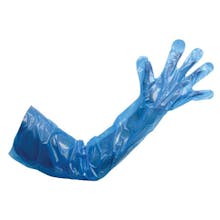
- An economical glove solution for undertaking frequent messy tasks
- Choose inexpensive flat packs or time-saving dispenser boxes
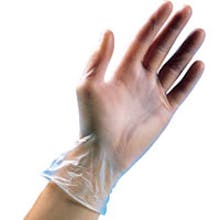
- Seamless vinyl disposable gloves are comfortable to wear
- Available in powdered and powder free varieties
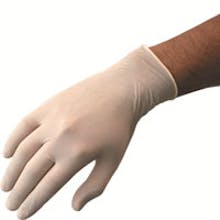
- Natural latex disposable gloves offer exceptional user comfort
- Powdered and powder free in various different grades
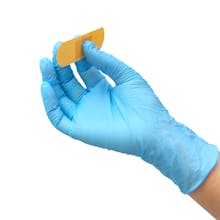
- Nitrile disposable gloves provide superior resistance to chemicals and tearing
- A safe and reliable alternative to Latex for allergy sufferers
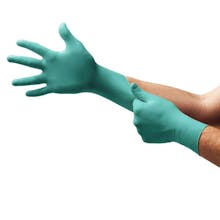
- Provide a comparable performance level to latex at a great price
- 100% latex free, stretchy material is strong yet comfortable
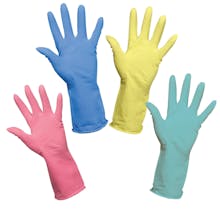
- Durable and dextrous multi-purpose gloves
- Designed specifically for household cleaning and janitorial tasks
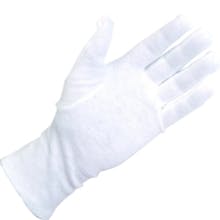
- Close knit polyester material provides superior durability
- High quality cotton inspection gloves have a Forchette design

- Ideal glove storage solutions provide easy access to gloves
- Dispensers available in single, double and triple box varieties
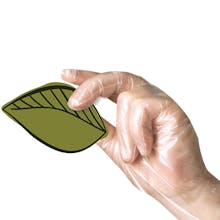
- A range of environmentally friendlier disposable gloves
Overview of First Aid Obligations for Businesses
In the UK, businesses are legally obligated to provide adequate first aid equipment, facilities, and trained personnel to ensure that employees receive immediate assistance if they are injured or become ill at work, this must be readily available and accessible at all times people are at work.
The Health and Safety (First-Aid) Regulations 1981 outline these requirements, ensuring that all workplaces are prepared to handle medical emergencies effectively.
The latest figures from the HSE show that 135 workers were killed in work-related accidents last year, while 561,000 workers sustained a self-reported non-fatal injury in the workplace during the same period.
Non-compliance with first aid regulations in the UK can lead to substantial fines, potentially up to £5,000 for minor breaches and unlimited fines for serious ones. Prosecution of responsible individuals can result in criminal charges and imprisonment, especially if non-compliance causes serious injury or death. Additionally, businesses may face compensation claims from injured employees and suffer reputational damage, leading to loss of business and trust. Ensuring compliance promotes a safer workplace and helps avoid these severe penalties.
Document L74 provides detailed guidance on complying with the Health and Safety (First-Aid) Regulations 1981. It expands on the legal requirements and offers practical advice on implementing effective first aid arrangements in the workplace. Key points include:
Risk Assessment Guidance
L74 outlines how to conduct a thorough risk assessment to determine the specific first aid needs of a workplace, considering factors like the type of work, workplace hazards, size and location of the workplace, and the number of employees.
First Aid Personnel
The document provides criteria for determining the number of first aiders or appointed persons required, based on the outcome of the risk assessment. It also details the training standards for first aiders.
First Aid Kits and Equipment
L74 lists the recommended contents of first aid kits for various workplace environments and advises on additional equipment that may be necessary for specific risks.
First Aid Rooms
For larger or higher-risk workplaces, the guidance recommends establishing a dedicated first aid room and provides specifications for its setup and maintenance.
Record Keeping and Review
Employers are advised to keep records of all first aid incidents and regularly review their first aid provisions to ensure they remain adequate and effective.
By following the Health and Safety (First-Aid) Regulations 1981 and the guidance in document L74, employers can ensure they provide appropriate first aid measures, comply with legal requirements, and maintain a safe working environment for their employees.
There is also additional first aid guidance for public and private premises available on ProtectUK and NaCTSO, specifically in relation to first aid preparedness and resilience in the event of a major incident.

First Aid Risk Assessment
Conducting a first aid risk assessment is a crucial step for businesses to determine their specific first aid requirements. This assessment helps identify the potential risks and the level of first aid provision needed.

Key steps in the first aid risk assessment include:
Evaluating Workplace Hazards
Identify potential hazards that could cause injuries or illnesses, such as machinery, chemicals, and manual handling tasks.
Assessing the Workforce
Consider the number of employees, their specific roles, and any particular health needs they may have.
Considering Past Incidents
Review previous accidents and incidents to identify trends and areas of concern.
Determining First Aid Requirements
Based on the findings, determine the number and type of first aid kits, the need for additional or specialised first aid equipment such as bleed control, eyewash, burns, and the level of first aid training required for staff.
Additionally, in assessing their needs, employers should consider:
- the nature of the work and workplace hazards and risks
- the nature of the workforce
- the needs of travelling, remote and lone workers
- work patterns
- the distribution of the workforce
- the remoteness of the site from emergency medical services
- employees working on shared or multi-occupied sites
- annual leave and other absences of first-aiders and appointed persons
- any first-aid provision intended for non-employees
First Aid Rooms
The need for a dedicated first aid room in a premises is determined by the specific regulations and guidelines set out in the Health and Safety (First-Aid) Regulations 1981 and the associated guidance provided in document L74.
First Aid rooms are required in the following circumstances:
High-Risk Environments
Workplaces with significant hazards, such as those involving dangerous machinery, hazardous substances, or high-risk activities, may require a dedicated first aid room to ensure immediate and effective treatment of injuries.
Large Workforces
Premises with a large number of employees are more likely to need a first aid room to accommodate the potential frequency and severity of incidents.
Complex Work Sites
Sites with complex layouts or those spread over a large area may benefit from a first aid room to provide a central, easily accessible location for medical treatment.
Specific Health Needs
If employees have particular health needs that require more substantial first aid facilities, a dedicated room may be necessary to provide appropriate care.
Requirements for a First Aid Room
If a first aid room is deemed necessary, it should meet the following criteria as outlined in document L74:
Accessibility
The room should be easily accessible to stretchers and those with mobility issues.
Facilities
It should include a couch or bed, a sink with hot and cold running water, and necessary first aid equipment and supplies.
Hygiene
The room must be well-lit, ventilated, and maintained in a clean and orderly condition.
Privacy
Provision for privacy, such as screens or curtains, is essential to ensure dignity and confidentiality for the casualty.
Communication
The room should have a means of communication to summon additional help if needed.
As with all first aid facilities – it should be clearly signposted, easy to locate and access.



First Aid Kits & Refills
First aid kits should be clearly marked, visible, easily accessible and contain appropriate supplies based on the workplace's specific needs following a risk assessment.

All first aid supplies should be compliant with relevant safety standards and carry the appropriate CE or UKCA markings, which ours do.
Key points include:
Maintenance
First aid kits should be regularly checked to ensure they are fully stocked and all items are within their expiry dates, particularly sterile ones. It is recommended that sufficient back-up supplies are always held on site to ensure continuity of provisions.
Location
Kits should be placed where they are easily accessible, such as in communal areas, near workstations, and in vehicles if employees are mobile. They must be clearly visible and signposted with a ‘first aid kit’ sign nearby.
Contents & Size
Depending on the outcome of a risk assessment, contents may need to comply with BS 8599-1:2019, which provides guidelines for different sizes of first aid kits (small, medium, large, and travel), in order to be sufficient. Basic items typically include adhesive plasters, sterile dressings, triangular bandages, safety pins, disposable gloves, antiseptic wipes, adhesive tape, scissors, and a resuscitation face shield – as stipulated in the HSE’s L74 document.
Specialised Equipment & Types Of Kit
Depending on the workplace risks, additional items such as burn dressings, eyewash solutions, bleed control products, and Automated External Defibrillators (AEDs) may be necessary.
1. Maintenance

An appointed person or trained first aider should be responsible for maintaining the kits.
Key aspects to check in a first aid kit include ensuring the container is free from damage, verifying adhesive items have not lost their stickiness, inspecting metal objects for rust, and examining dressings, bandages, and plasters for any signs of fraying or tears. Regularly checking these components ensures that the first aid supplies remain in good condition and effective in an emergency.
2. Location

Employers must inform all employees about the location of first aid kits and the names of first aiders or appointed persons, ideally using compliant signage.
First aid kits can be mounted on the wall, placed on a countertop, or stored in a cabinet. Installing clearly visible first aid stations nearby can also make the kits easier to locate.
However, when wall-mounting a first aid kit, consider that it may be challenging to bring the equipment to an immobile casualty quickly. Therefore, it might be necessary to position additional kits throughout the area to ensure equipment is easily accessible to all.
Additionally, consider the surrounding work activities or equipment when choosing a location for your first aid kits. Avoid placing them in areas with high temperatures or where work activities produce debris, as these conditions could compromise the integrity of the kits and their contents.
Staff responsible for first aid must receive appropriate training to ensure they can use the equipment effectively.
3. Contents & Size
The number of kits as well as the nature and amount of contents must reflect the risks identified during a first aid risk assessment.
Within official HSE guidance, there is a minimum contents list for low-risk activities (for example, desk-based work), a minimum first aid kit might contain:
- a leaflet with general guidance on first aid (for example, HSE's leaflet Basic advice on first aid at work
- individually wrapped sterile plasters of assorted sizes
- sterile eye pads
- individually wrapped triangular bandages, preferably sterile
- safety pins
- large and medium-sized sterile, individually wrapped, unmedicated wound dressings
- disposable gloves

BS-8599-1 is the British Standard to specify the contents of First Aid Kits in the workplace, which is more extensive than the above minimum list.
Kits do not need to comply to BS-8599 by law, however the standard has specifically been developed as part of a modern approach to what is considered to be a suitable range of products in the workplace of today.
Factors such as new technologies in product development, different types of injury & risk, alterations to training protocols as well as an increased awareness of infection control have resulted in the basic content list above no longer being suitable for a typical modern workplace.
This standard will bring workplace first aid kits in line with other safety products such as hard hats and fire extinguishers.
Once a British Standard exists, if an employer chooses not to follow it, and then an employee has an accident, then the employer's legal defence would be very weak in any negligence claim.
For example; a formal risk assessment of any modern workplace would identify the risk of scalding from a boiling kettle, yet kits with only minimum contents do not contain burns dressings which are proven to reduce pain, scarring and infection complications an employer will now be liable for if they have failed to provide sufficient first aid supplies for treatment.
The old and more primitive 'HSE' system specified the correct choice of first aid kit based on the number of employees it needed to cover. This approach, however, did not take into consideration the level of risk present in a workplace. Use the table below as a guide to choosing your size of BS-8599-1 compliant first aid kit. The table below can be used as a guide to find the right sized of first aid kit for you:

Why Buy From FirstAid4Less?
Widest Range from a first aid specialist – Choose From Over 10,000 Products!
Expert Product Advice and guidance on regulations
Lowest Prices - Seen a cheaper like-for-like price? Let us know!
Next Working Day Delivery on stocked items
Instant Credit for all established UK businesses – pay on invoice!
You Can Talk To Us! Via freephone or instant chat
Thousands of 5 star trustpilot reviews – placing an order is fast and simple






